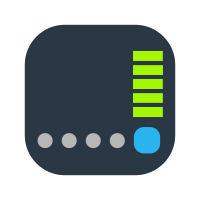Thank you to both Rusty and WST16 for their rapid and helpful responses to my first question yesterday. Having read the recommended documents I am wiser, but not necessarily sufficiently to take meaningful action. I think I see what to do and then as I try to implement it, I remain confused.
My needs are straightforward. I want to use my DS218Play to;
1. backup music and video
2. Play music and video using the relevant DS Audio and DS Video apps within my local network
3. Play music and video using the DS Audio and DS Video apps remotely
4. Use the Amazon Echo Audio Station skill to play music on Echo devices
Now, I have all this working, after a fashion, with DDNS (let’s all it “pjh01.synology.me”) & certificate. I say ”after a fashion” as i suspect the setup is far from optimal, using port forwarding which seems a tad messy and possibly insecure.
I think I can see the Application Portal and Reverse Proxy as a way into this, based on the application that is trying to access the NAS. So,
question 1. Does the NAS understand from which app it is receiving a request?
and if the answer to that is “yes”,
question 2. How do I relate the app I see in the Application Portal to the FQDN required in the Reverse Proxy? is it as straightforward as the FQDN for these specific apps as being ”audio.synology.me” and “video.pjh01.synology.me”?
Thanks again for all your help here.
Paul
My needs are straightforward. I want to use my DS218Play to;
1. backup music and video
2. Play music and video using the relevant DS Audio and DS Video apps within my local network
3. Play music and video using the DS Audio and DS Video apps remotely
4. Use the Amazon Echo Audio Station skill to play music on Echo devices
Now, I have all this working, after a fashion, with DDNS (let’s all it “pjh01.synology.me”) & certificate. I say ”after a fashion” as i suspect the setup is far from optimal, using port forwarding which seems a tad messy and possibly insecure.
I think I can see the Application Portal and Reverse Proxy as a way into this, based on the application that is trying to access the NAS. So,
question 1. Does the NAS understand from which app it is receiving a request?
and if the answer to that is “yes”,
question 2. How do I relate the app I see in the Application Portal to the FQDN required in the Reverse Proxy? is it as straightforward as the FQDN for these specific apps as being ”audio.synology.me” and “video.pjh01.synology.me”?
Thanks again for all your help here.
Paul

